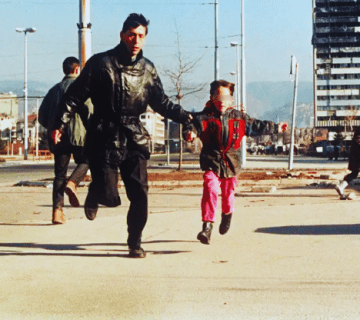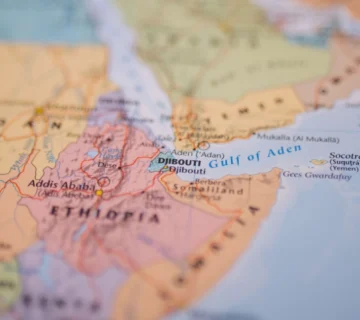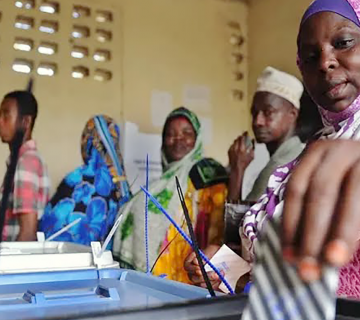April 15, 2025 marks a grim anniversary: two years since Sudan plunged into a devastating civil-war. What began as a power struggle between the Sudanese Armed Forces (SAF) and the paramilitary Rapid Support Forces (RSF) has morphed into a catastrophic conflict, tearing the nation apart, creating the world’s largest displacement crisis, and threatening to destabilize the entire region. While recent battlefield shifts, notably the SAF’s recapture of Khartoum, might suggest a turning point, the reality is far more complex and perilous. Both sides appear entrenched, external backers continue to fuel the flames, and the path to peace looks increasingly elusive, overshadowed by the looming specter of state fragmentation.
The Genesis of Conflict
The roots of the current war lie in the turbulent aftermath of Omar al-Bashir’s ouster in 2019. Bashir, during his three-decade dictatorship, deliberately fostered the RSF’s growth, -a force that evolved from militias implicated in Darfur atrocities as a counterweight to the regular army, effectively coup-proofing his regime. Following his removal amidst popular protests, the SAF, led by General Abdel Fattah al-Burhan, and the RSF, commanded by Mohamed Hamdan Dagalo (Hemedti), initially formed an uneasy alliance, seizing power jointly. However, their shared commitment to derail a transition to civilian rule, culminating in a 2021 coup, soon gave way to intense rivalry. Disagreements over integrating the RSF into the national army and mounting pressure to restore civilian governance finally boiled over on April 15, 2023, turning Khartoum into a warzone.
Shifting Tides
For much of the conflict’s first year and a half, the RSF appeared to hold the military advantage. They swiftly gained control over large swathes of Khartoum, besieged SAF strongholds, and expanded their footprint across the vast Darfur region (with North Darfur’s capital, El Fasher, being a notable exception) and parts of Kordofan. A surprise offensive in late 2023 saw the RSF push further into Sudan’s riverine heartland, seemingly pushing the state towards collapse and forcing the SAF leadership to relocate to Port Sudan. However, the tide began to turn in mid-2024. The SAF, seemingly regrouped and possibly bolstered by external support and alliances with former rebel groups, launched a multi-pronged counter-offensive in September 2024. This culminated in significant gains in the greater Khartoum area in early 2025. The recapture of the Presidential Palace and key areas of Khartoum in late March 2025 marked a major symbolic and strategic victory for the SAF. General Burhan declared Khartoum “free,” while RSF fighters were seen retreating westwards, some towards Omdurman, others further into Kordofan and Darfur.
Escalation and Fragmentation Loom
Despite the SAF’s recent successes, the war is far from over. Instead of leveraging the recapture of Khartoum to pursue peace, the SAF leadership appears determined to achieve total military victory. General Burhan has publicly rejected negotiations, demanding the RSF’s surrender and disarmament. This hardline stance is likely reinforced by elements within his coalition, including Islamist factions linked to the Bashir regime and former rebel groups now allied with the army. The RSF, though dealt a blow in Khartoum, shows no sign of capitulating. The RSF continues its brutal siege of El Fasher in North Darfur, ongoing since April 2024, resulting in hundreds of civilian deaths and horrific humanitarian conditions. Attacks on civilians and infrastructure, like the reported assault on the Sudan Church of Christ in Omdurman shortly after the Khartoum retreat, continue unabated. Furthermore, the RSF seeks to open new fronts and relies on its alliances, including with factions of the Sudan People’s Liberation Movement-North (SPLM-N), to potentially regain momentum. Compounding the dire situation are credible reports of grave human rights abuses by both sides. The RSF, meanwhile, faces extensive accusations of looting, sexual violence, and ethnically targeted attacks, particularly in Darfur.
This pursuit of military solutions by both warring parties, fueled by external support notably alleged backing for the SAF from Egypt and for the RSF from the UAE risks not only prolonging the suffering but also leading to the de facto fragmentation of Sudan. The potential formation of competing governments by Burhan and the RSF (possibly in alliance with groups like the SPLM-N) would further complicate any future negotiation efforts, potentially making the conflict intractable and solidifying a devastating partition.
Regional Stakes and the Imperative for Diplomacy
The war’s ripple effects are acutely felt across the region. Chad and South Sudan, already grappling with their own challenges, face immense pressure from refugee inflows and the potential spillover of instability. The conflict dynamics risk drawing in regional powers more directly, escalating tensions further.
Concerted diplomatic pressure is urgently needed. Key regional players hold significant leverage:
- Saudi Arabia and Egypt: As influential partners of the SAF, they are best positioned to persuade General Burhan to reconsider negotiations and explore pathways to a ceasefire.
- United Arab Emirates: As an actor with arguably significant influence on the RSF , the UAE can use its persuasion and convince Hemedti towards de-escalation and dialogue, potentially pursuing a détente with the SAF camp to create space for talks.
While initiatives like the Jeddah talks co-led by Saudi Arabia and the US have stalled, renewed and coordinated regional and international efforts are paramount.
The Role of the International Community
The international community, including Western powers, cannot afford to remain disengaged. Although the current US administration under President Trump has shown limited focus on Sudan thus far, compelling reasons exist for greater involvement. Washington’s significant ties with Riyadh, Abu Dhabi, and Cairo provide unique leverage. An active US role, potentially in concert with other international actors, could be crucial in supporting regional diplomatic efforts, pressing for humanitarian access, ensuring accountability for atrocities, and ultimately helping to broker a sustainable peace agreement. The sheer scale of the humanitarian catastrophe – the world’s worst displacement crisis and escalating famine conditions – demands global attention and action.
Conclusion
Sudan stands at a precipice. The SAF’s recapture of Khartoum has shifted the military landscape but has not brought peace closer. Instead, it risks fueling a dangerous escalation and deepening the fragmentation of the country. Without urgent, unified, and robust diplomatic intervention led by regional powers with genuine leverage, supported by the wider international community, Sudan faces a future of protracted conflict, unimaginable human suffering, and destabilizing consequences for the entire Horn of Africa and Sahel regions. There is urgent need for decisive action to silence the guns and forge a path back from the abyss.
Photo Credits: Reuters
Bravin Onditi is a Research Assistant at the HORN Institute.
The views expressed in this article are those of the authors and they do not necessarily reflect the position of the HORN Institute.



